Will I make money as an artist?
Years ago I documented my early experiences with 'Print on Demand' Site, Society 6. It was short article, mostly to complain about a few problems I had with S6's platform. This time I'm going in-depth. Addressing my experiences, thoughts and issues with a similar Print on Demand site- Design By Humans (DBH). With so many aspiring artists asking me, "how do I make money online?", this article should give some insight. It doesn't necessarily point the way to the pot of gold every artist is looking for, but hopefully you'll appreciate an honest, critical perspective.
What is a Print on Demand (POD) site?
There’s now dozens of online stores/platforms which allow artists and designers to create their own store page and upload their artwork, designs and digital assets to be sold on prints, products such as phone cases and apparel such as t-shirts. A royalty or commission then gets paid to the artist after the store sells, prints and post orders which make use your artwork.
It seems like a great idea. You earn a small passive from income your artwork without needing to develop and run the platform from which you sell it on. You just spend a little time putting the art online (which you may have already have created) and then wait for the money to begin rolling in! Or rather, more often than not, then wait for the tumble-weed to go rolling past!
What is Design By Humans?
It's a USA based POD site, born over a decade ago, which specialised in printing T-shirt designs and has now branched out to offer other products in addition such as prints, stickers and mugs. Several years ago when I first joined the site, it was a small artist's hub offering up designs which other artists and customers alike had voted for in a competition-like format. The voting system generally ensured that everything the site printed and sold featured a quality design worthy of being worn in public. A number of years ago the site updated their business model to allow anyone (artists were initially vetted however) to populate the site with their designs without needing votes, in the same way POD sites like Tee Public and Society 6 work. This now meant artists like myself could at least have the opportunity to sell our designs in a more open market system.
However without the voting system, the quality standard across the site has, in my opinion, significantly dropped. Without wanting to sound like I'm blowing my own horn, many of the more professional artists like myself are now firmly in the minority. Both as an artist and consumer, I find this frustrating. The vetting process for designs that DBH now allow is somewhat lacking, which I'll discuss later as it's kind of amusing.
What Does Design By Humans pay?
DBH is one of several POD sites I have experimented with over the years, which does typically earn me at least something each month; even if it's just a couple of bucks. Although it's hard to say whether or not I'd recommend other aspiring artists and designers bothering with it.
To format your designs, upload your work through their 'add a product' system and create the relevant keywords to aid search results takes a long time, like with any POD site. And you may not end up being adequately financially compensated for your efforts. Like all ventures of this nature, there's some risk involved and whether or not you'll succeed on such as site is not a simple answer.
As an example- I might upload a design which takes an hour to format into the correct size PNG file, upload and configure. That design might not make a single penny over the course of years. Other designs might make a few dollars, while others still could generate hundreds of dollars.
Patience required
In my experience, generating hundreds of dollars for a design isn't common for most but with POD sites it's worth noting you're playing the long game; you go to the effort of uploading your designs in the beginning and might have to wait a number of years before seeing a significant financial return.
For example, one of my Sugar Skull Girl designs has currently generated me over $50 total on DBH. The design was uploaded nearly two years ago. So let's say the design is earning me $25 a year. Not much, right? But providing the design carries on selling for 10+ years, that's $250 of passive income. Is that worth it to you? You decide. Keep in mind I use this same design across several other POD sites. Each earning a few bucks here and there. This design also sells on art prints on my own site or through conventions and events I attend. Therefore when you add up the amount of money this one design makes across different platforms and sales channels over the course of a decade, it's considerably more than if I were to instead work solely as a commission artist who charges, say, $250 for a single, one-off artwork or design which I then never derive any further income from.
How much money can I get?
To answer the question of pay-out royalty; DBH currently offers a designer around $3 every time they sell a $25 shirt. DBH state they offer competitive rates, which is true compared to some POD sites which only offer a dollar per sale. As an artist, do I think $3 is fair? No way! The only reason a T-shirt sells is because the customer is buying the design on it. While I appreciate Print-On-Demand / order quantities of 1 are going to carry a higher cost to produce compared to a mass-produced shirt printed in the thousands, I'd imagine the artist isn't getting even a third of the net profit on each sale and without the designs us artists provide POD sites wouldn't exist in the first place.
When it comes to retail, the artist, inventor or original creator taking the smaller share for a sale is nothing new. It can equally be true to say; without the opportunity to sell on their site, us artists would also have nothing. And so the market determines if DBH's rates are profitable enough for them to run their business whilst satisfying the expectations of enough artists who are willing to give it a go and populate their site.
Are POD sites a reliable money earner?
With all POD sites, you should never rely on them as your primary source of income. Some people seem to have found the magic formula to be able to do this- I know of a few people who make thousands of dollars a month from POD sites, But like with a lot of these types of venture, those people make up a very small percentage of total sellers. For most it's a complete dead-end or just a trickle of passive income you could never expect to live off, especially if living in a first-world country.
While a design has the potential to keep generating a passive income for years, maybe decades, it also has the potential to dry up at any time. The business could cease trading, the search algorithm used to find your design could change (either on-site or via external search engines which point to your designs), or your design could get buried under a pile of other designs which come after it.
Also expect dry spells and more active selling times of the year towards x-mas, where sales will suddenly spike compared to previous months.
Too much garbage
So many POD sites have emerged over recent years, and you can understand why. It seems like the perfect business model: You provide a platform then get online designers and artists to populate it with products for you to sell and make a profit from whilst paying the majority of your work-force (us artists) nothing unless the product sells! And even then, the amount they pay seems a little unfair to the artists. Sure, these POD companies advertise their platform which brings customers to their site, but any business needs to do this regardless. So to reiterate, even though it might be worth artists experimenting with POD sites it's also worth noting you'll likely not earn a great deal and the royalty is kinda lousy (even if it is considered the going rate or better for such sites). If any designer out there is making mega bucks and wants to prove me wrong, great! And let me know. I love a success story :)
What type of artwork and designs sell?
The fact the pay-outs and earning potential is relatively low for most POD site artists, means many top-end professionals are probably going to avoid bothering with it, and instead it attracts designs from the likes of lazy opportunists, kids, novices or amateurs whose standard of work is pretty bad. Part of DBH's mission statement reads, "Embedded in the culture of Design By Humans is a passion for brilliantly designed tees, detailed illustration and a strong appreciation for all things creative." While we can try to appreciate the 'all things creative' part, there are a lot of tees which are certainly not brilliantly designed or illustrated in detail. You might be thinking, but isn't that a good thing as it means your work will stand out above the competition? Sure, it's always a bonus if a large portion of your competition on a site is producing sub-par work to make your stuff stand out. However it's not so good when such work pushes your designs to the bottom of the pile, effectively banishing them to page 10+ of an on-site search result and otherwise making them difficult to find.
DBH, like many POD sites are a bit of a free-for-all allowing almost anything to be uploaded and sold. I'm putting a lot of time into my art and designs, bumping up the quality, adding the "detail" and trying to produce something which I think might sell and do well on the site. It's not just me, but any competent artist in this position who can generate sales on DBH deserves to have their work more prominently placed in search results, yet this isn't always the case.
While I agree it's fair to give every designer the opportunity to upload their work, it's not necessarily fair to give equal allowances or privileges to artists of lower ability levels or standards when it comes to a design holding it's place at the top of a search result.
If an artist practices their craft for decades, gets pretty good at it, attempts to get eye-balls on their design and thus potentially make a sale, that's fair enough, right? But it is unfair for an amateur or lazy designer's work to get bumped to the top of the pile whilst pushing down the experienced pro's offering just because the amateur happened to be the last person to post or because they have lots of designs to populate search results. Basically I'm all about fairness and rewarding designers on a meritocratic basis.
To some degree this issue could be mitigated during the submissions process. Once upon a time DBH only used to allow artists to open a store if they could prove their artistic worth (perhaps they still do, but people are now lying about their credentials?). But I don't think that's the case any more, and I'll show you what I mean below. Therefore the design submission process needs to be a little stricter in regards to quality control.
Examples:
I did a general search for "anime girl" since I've listed several designs with those keywords and here's some of the not-so-great examples of what came up within the first 10 pages, much of which frustratingly pushes my artworks/products further down the search results list:
[caption id="attachment_4171" align="aligncenter" width="660"]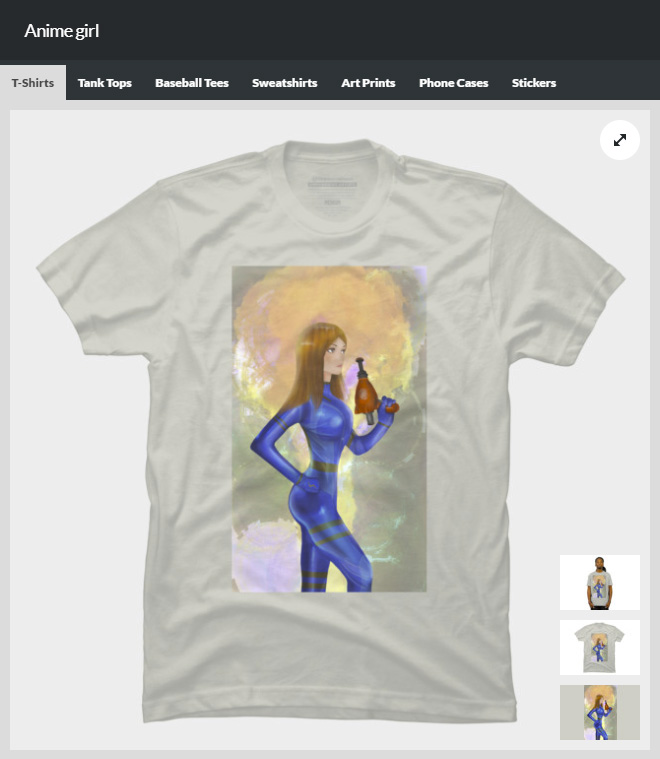 Not formatted for a T-shirt[/caption]
Not formatted for a T-shirt[/caption]
[caption id="attachment_4172" align="aligncenter" width="660"]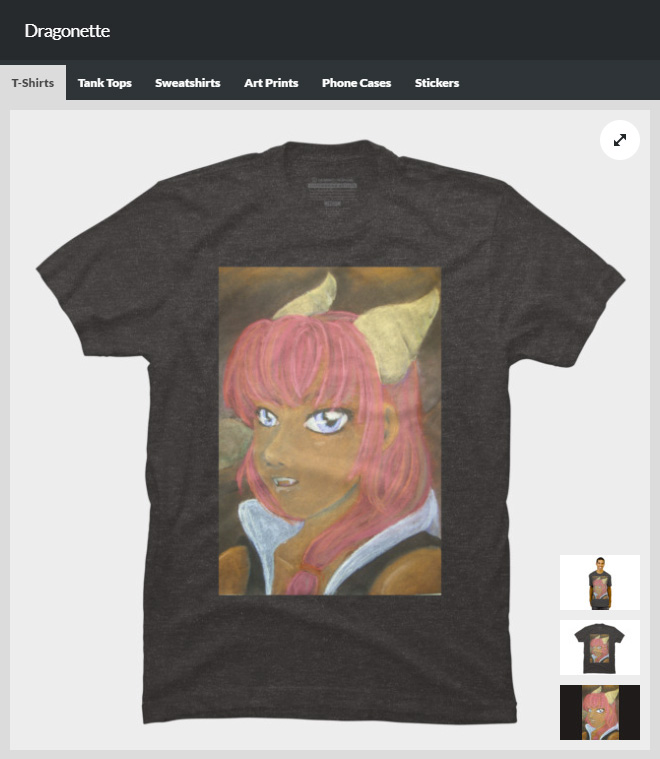 Again, not formatted for a shirt[/caption]
Again, not formatted for a shirt[/caption]
[caption id="attachment_4173" align="aligncenter" width="660"]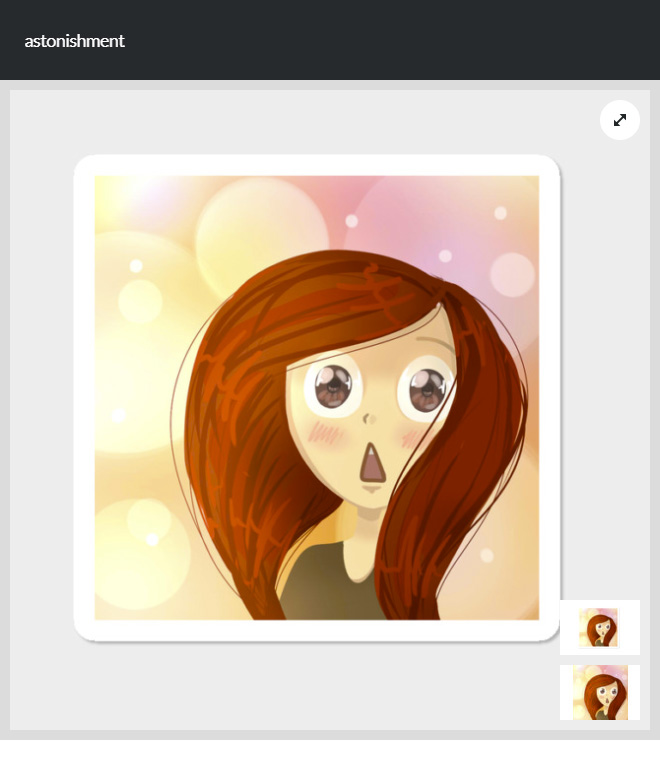 The emotion is conveyed at least[/caption]
The emotion is conveyed at least[/caption]
[caption id="attachment_4174" align="aligncenter" width="660"]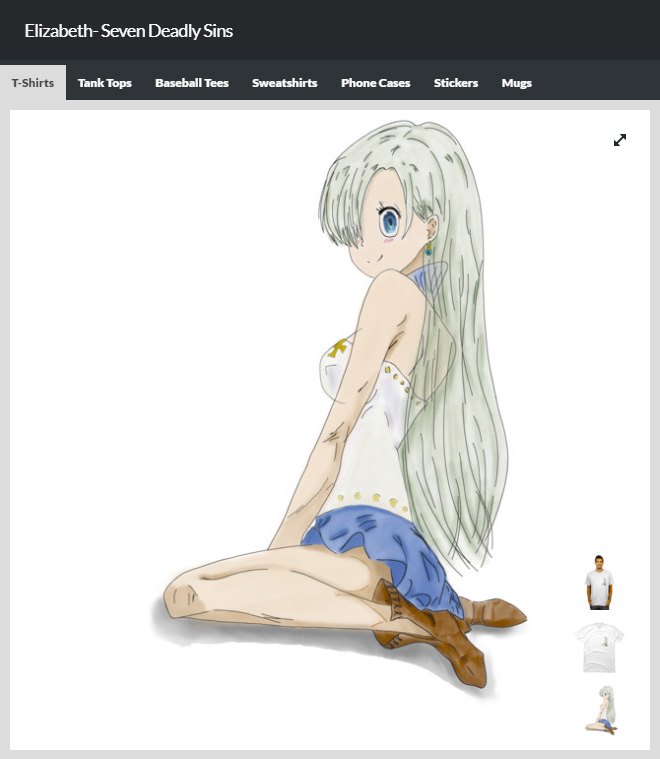 A poor copy of existing character art?[/caption]
A poor copy of existing character art?[/caption]
[caption id="attachment_4175" align="aligncenter" width="660"]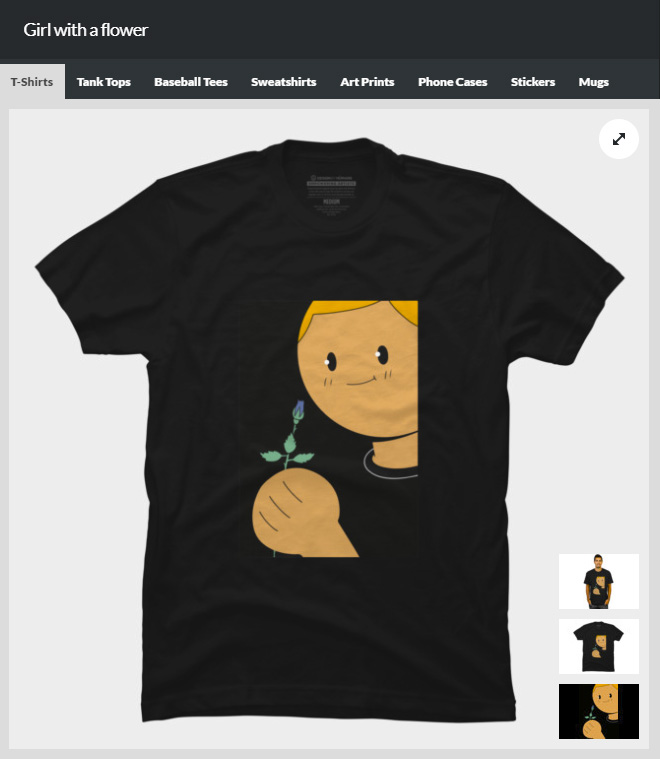 This style is better suited elsewhere[/caption]
This style is better suited elsewhere[/caption]
[caption id="attachment_4176" align="aligncenter" width="660"] Not at the commercial level yet[/caption]
Not at the commercial level yet[/caption]
[caption id="attachment_4177" align="aligncenter" width="660"]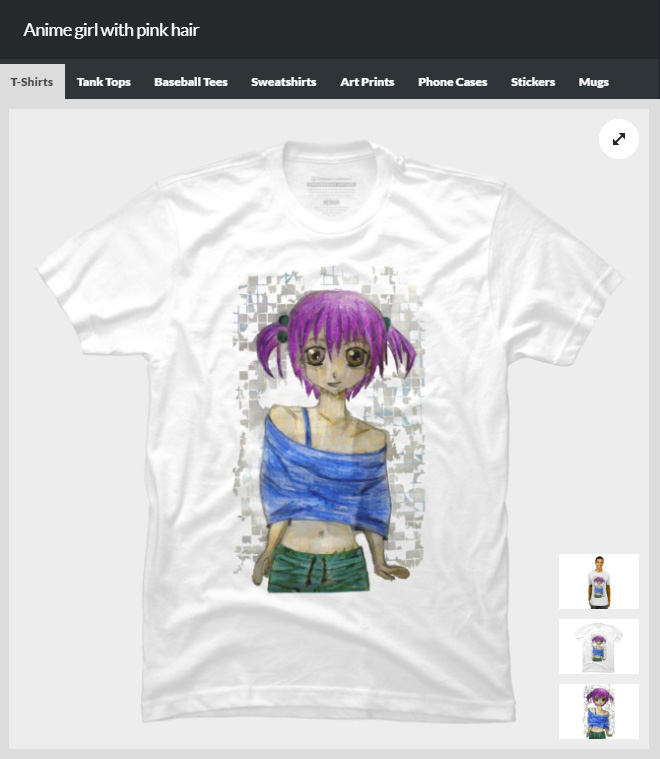 How did this pass quality control?[/caption]
How did this pass quality control?[/caption]
[caption id="attachment_4178" align="aligncenter" width="660"] This seller posted 4 near identical versions of this stolen and poorly optimised art! Why?![/caption]
This seller posted 4 near identical versions of this stolen and poorly optimised art! Why?![/caption]
[caption id="attachment_4179" align="aligncenter" width="660"] This artist also uses other artist's stolen artwork in their store[/caption]
This artist also uses other artist's stolen artwork in their store[/caption]
[caption id="attachment_4180" align="aligncenter" width="660"] Consistent style but...[/caption]
Consistent style but...[/caption]
"But Ben, who are you to judge? Art/beauty is subjective". That argument simply doesn't apply in many cases. The artistic rules such as anatomy, proportion, lighting, rendering, colour theory, composition and style apply regardless. By all means draw, paint and design no-matter your level of experience or ability, but please re-consider attempting to profit from what you're doing if you've never encountered the rules above. On the flip side, there are some worthy designs listed also. Again, searching for the keywords "anime girl". And like I say, if you can't tell the difference between the 10 examples above and the 5 below, you shouldn't be looking to sell your artwork or designs on T-Shirts just yet. Level up your skills and come back when you have something of value to offer. And I'll just take this opportunity to make the point that I don't want to appear conceited about my own abilities. My work is by no means perfect but it's good enough to sell, and does.
[caption id="attachment_4181" align="aligncenter" width="660"]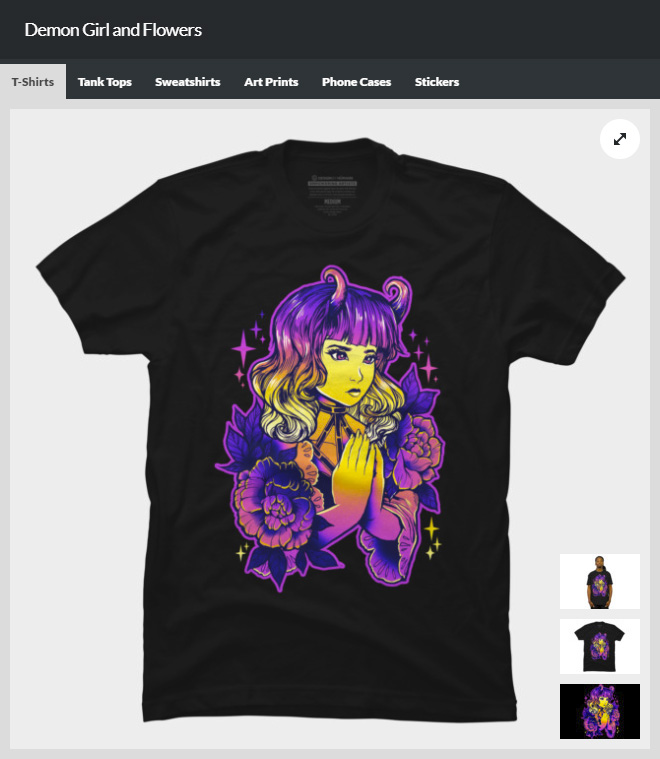 Colourful, nicely composed design. Seller: Retkikosmos[/caption]
Colourful, nicely composed design. Seller: Retkikosmos[/caption]
[caption id="attachment_4182" align="aligncenter" width="660"] This guy's a master of exaggerated proportion and anatomy. Seller: Rafchu [/caption]
This guy's a master of exaggerated proportion and anatomy. Seller: Rafchu [/caption]
[caption id="attachment_4183" align="aligncenter" width="660"] Art by yours truly: Seller: bomazu[/caption]
Art by yours truly: Seller: bomazu[/caption]
[caption id="attachment_4184" align="aligncenter" width="660"]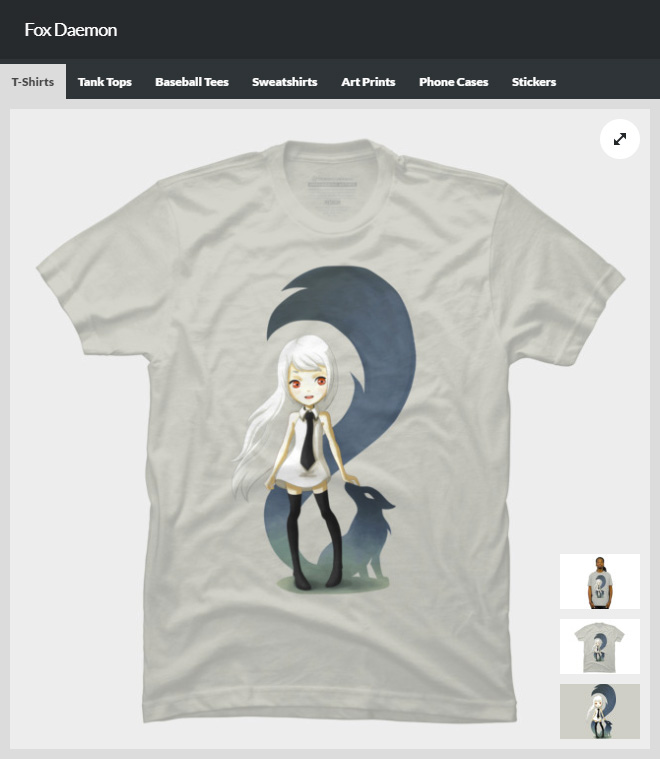 Looks good on a shirt and artist has a consistent style in their store. Seller: Freeminds[/caption]
Looks good on a shirt and artist has a consistent style in their store. Seller: Freeminds[/caption]
[caption id="attachment_4185" align="aligncenter" width="660"] This is a cute sticker. Seller: Cayzi[/caption]
This is a cute sticker. Seller: Cayzi[/caption]
I guess ideally DBH expects you, the artist to direct customers to your unique DBH Store page and bypass the need to use their search engine? Personally, if I'm going to market my designs as well, I'd rather direct customers to my own website and have the designs printed myself, or use a drop-shipping service to do this on my behalf. I expect POD sites to direct traffic to my products if they're taking the lion's share of the profits.
What does DBH get right?
My intention isn't just to hunt down all the flaws with their platform and the site has some benefits over similar sites I've worked with:
No pay-out threshold: Some sites, such as Displate and Zazzle require you to earn $50 before they pay you YOUR money. DBH don't try to unfairly skim off the top from their designers and always pay monthly no matter how much you've earned.
Decent Support: I've contacted the staff on several occasions and they've always been helpful and try to resolve problems.
Quality T-shirts: I've bought a number of shirts from DBH in the past and the quality and fit has always been good.
Less Piracy: Some moderation takes place to limit the number of stolen, infringed designs being sold on their site. There's nothing worse than a huge free-for all POD site such as Red Bubble which is happy to allow art thieves to profit from re-posting art they pull from an internet image search. DBH still has too much of this, but not in such high numbers.
Measures to prevent art thieves: Unfortunately It's not uncommon for artists to upload their design to a POD site, for it to then be stolen/downloaded some time after by an immoral dick-head who re-posts it on another POD site without consent. Luckily DBH used low-res images in their store, making this harder to download and use elsewhere.
Final thoughts
DBH- a nice idea and company filled with lovely staff, I'm sure. It creates opportunities to make money which artists wouldn't otherwise have, but the experience of competing on the site can be frustrating and isn't something you'll ever get rich from. If it's not for the fact you're up against the selection of dominant 'popular designs' (which forever prevent new work getting noticed by ranking top of the search listings,) you're also having to deal with the site's many amateur designers and art thieves unfairly given a place at the table. I'll carry on supporting DBH and using their site, but can't give them a strong recommendation to other artists or designers. Making any money from them is too hit and miss.
For independent reviews of designs, shirt quality and POD sites themselves, Check out Teefetch. I stumbled across them recently and noticed the site had featured some favourable reviews on a couple of my own designs which was cool to see.
And feel free to click here if you want to check out the range of anime or tattoo inspired t-shirts and I have available on DBH which features artwork from yours truly. If you want to purchase one too, I'll greatly appreciate the $3 of royalty!



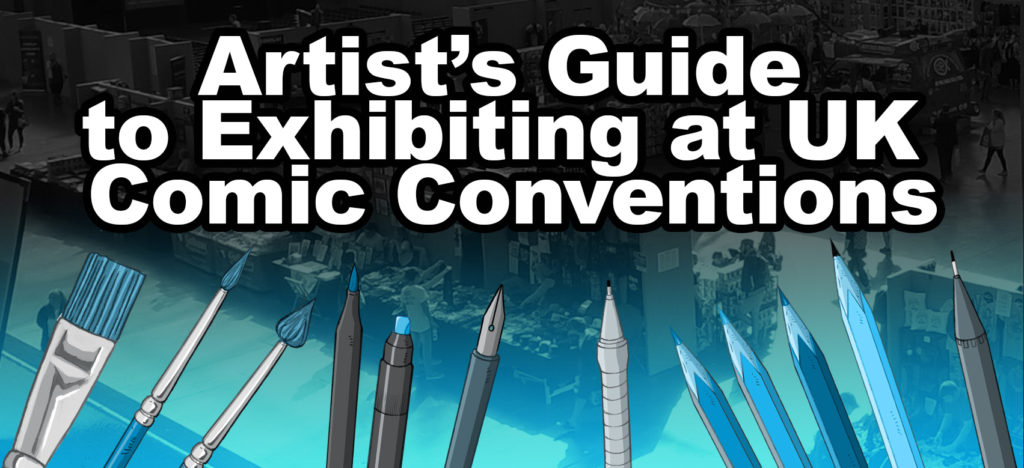



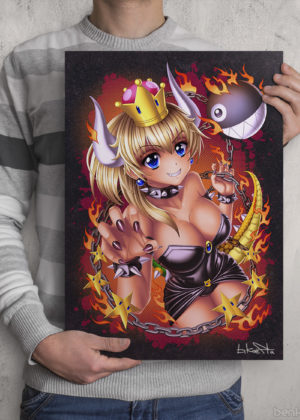




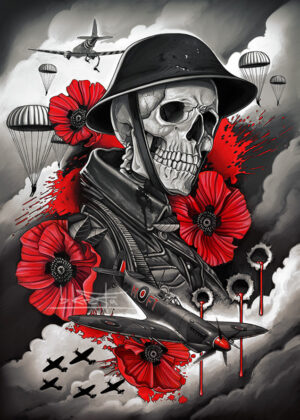
 RSS – Posts
RSS – Posts